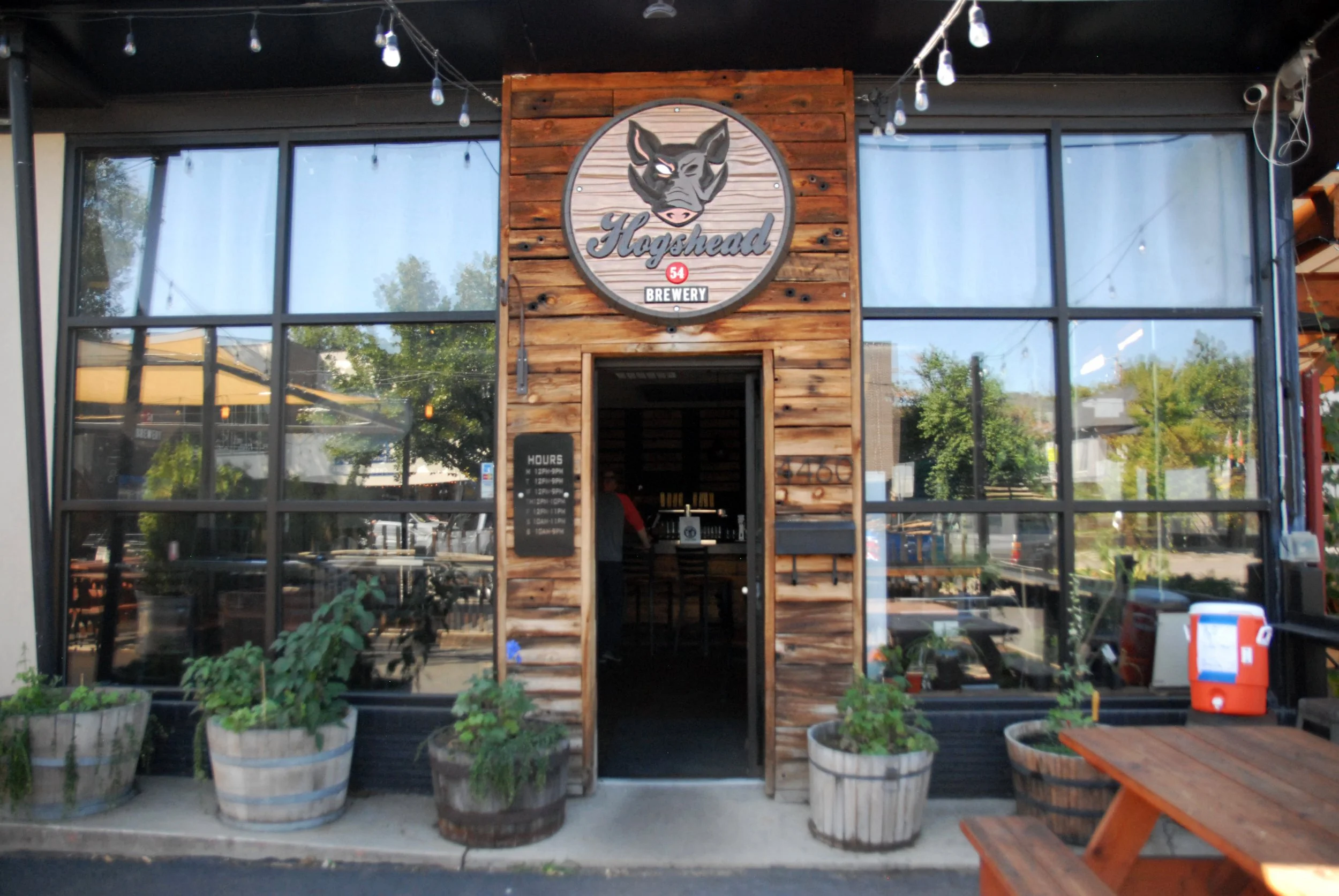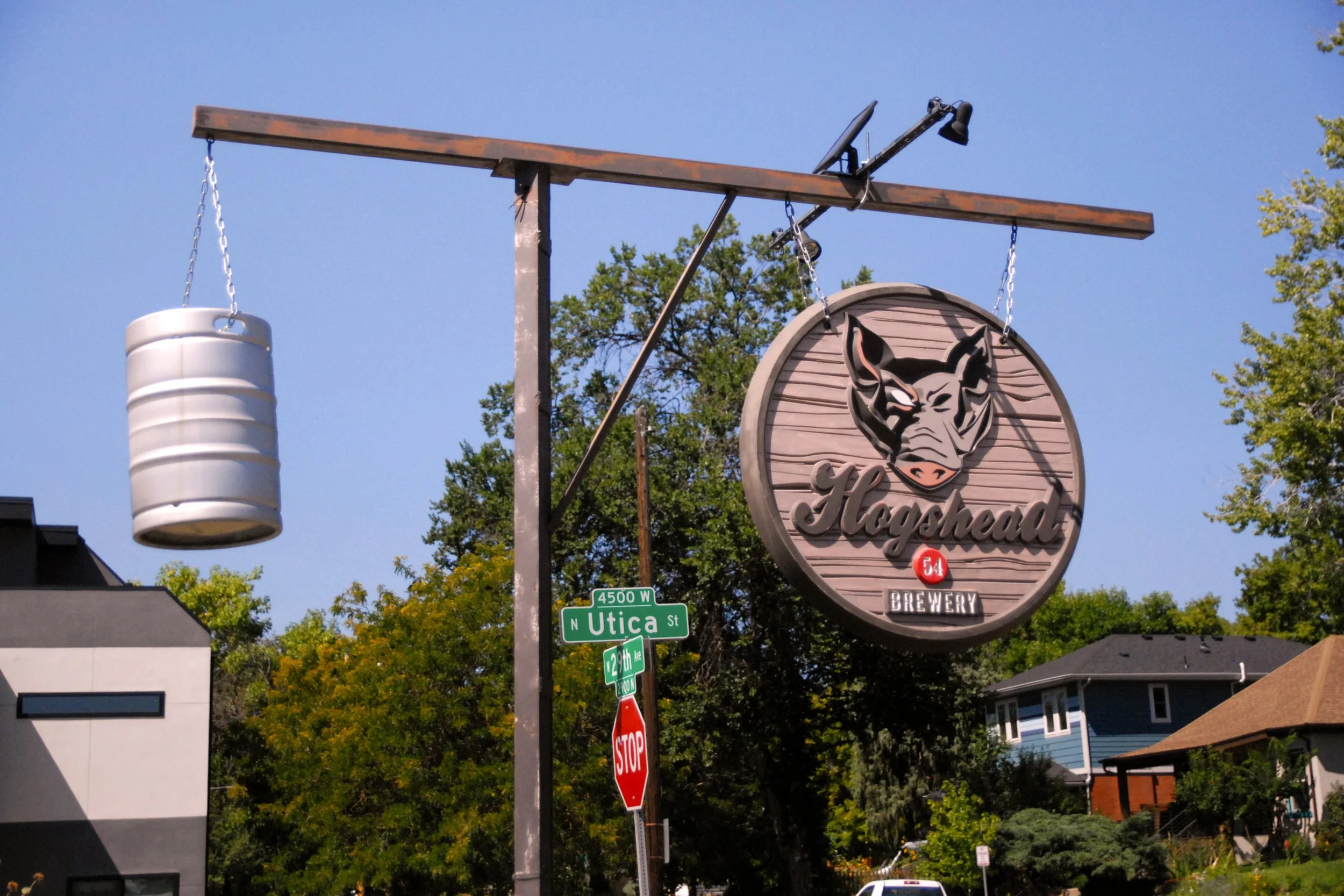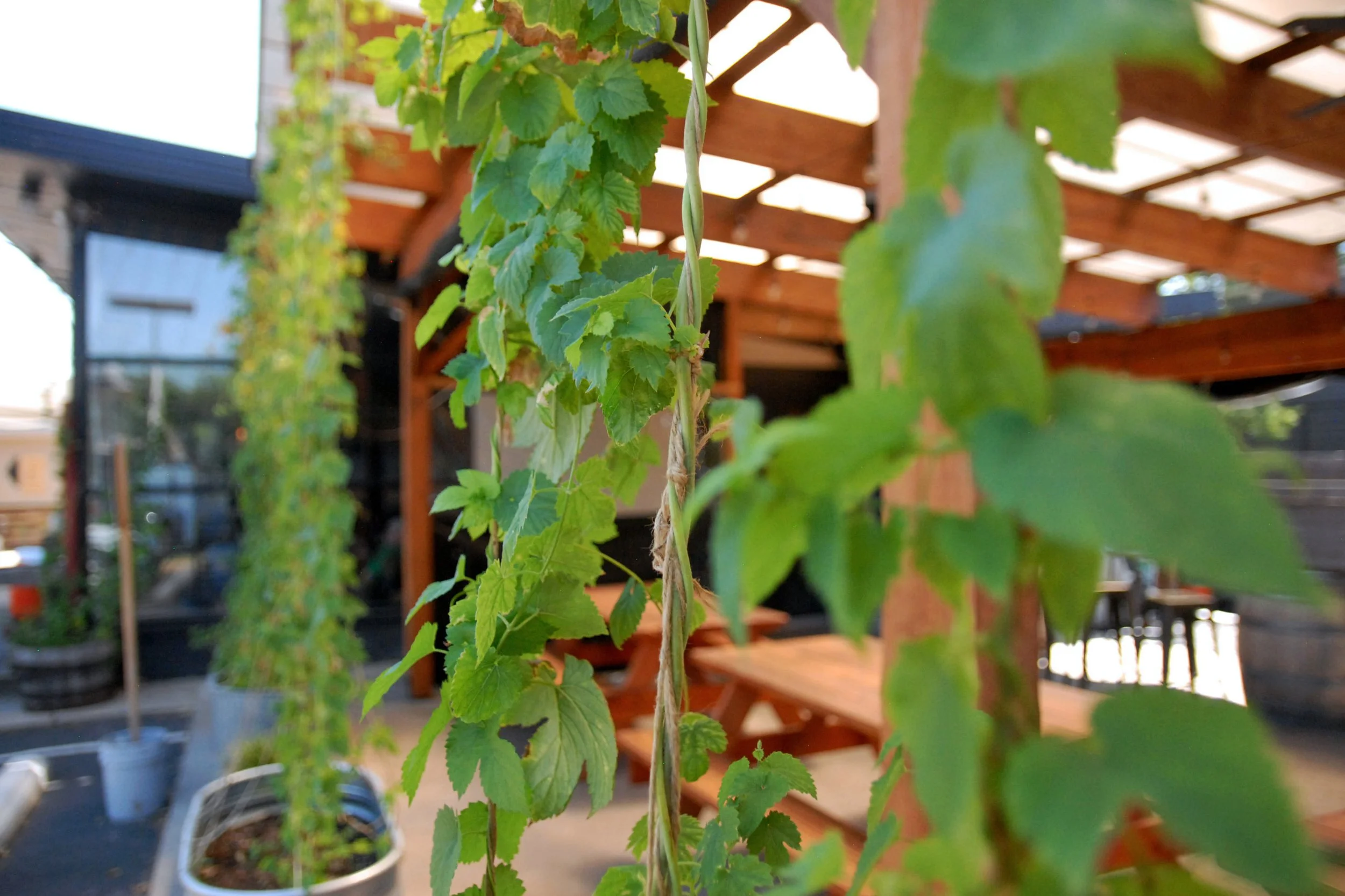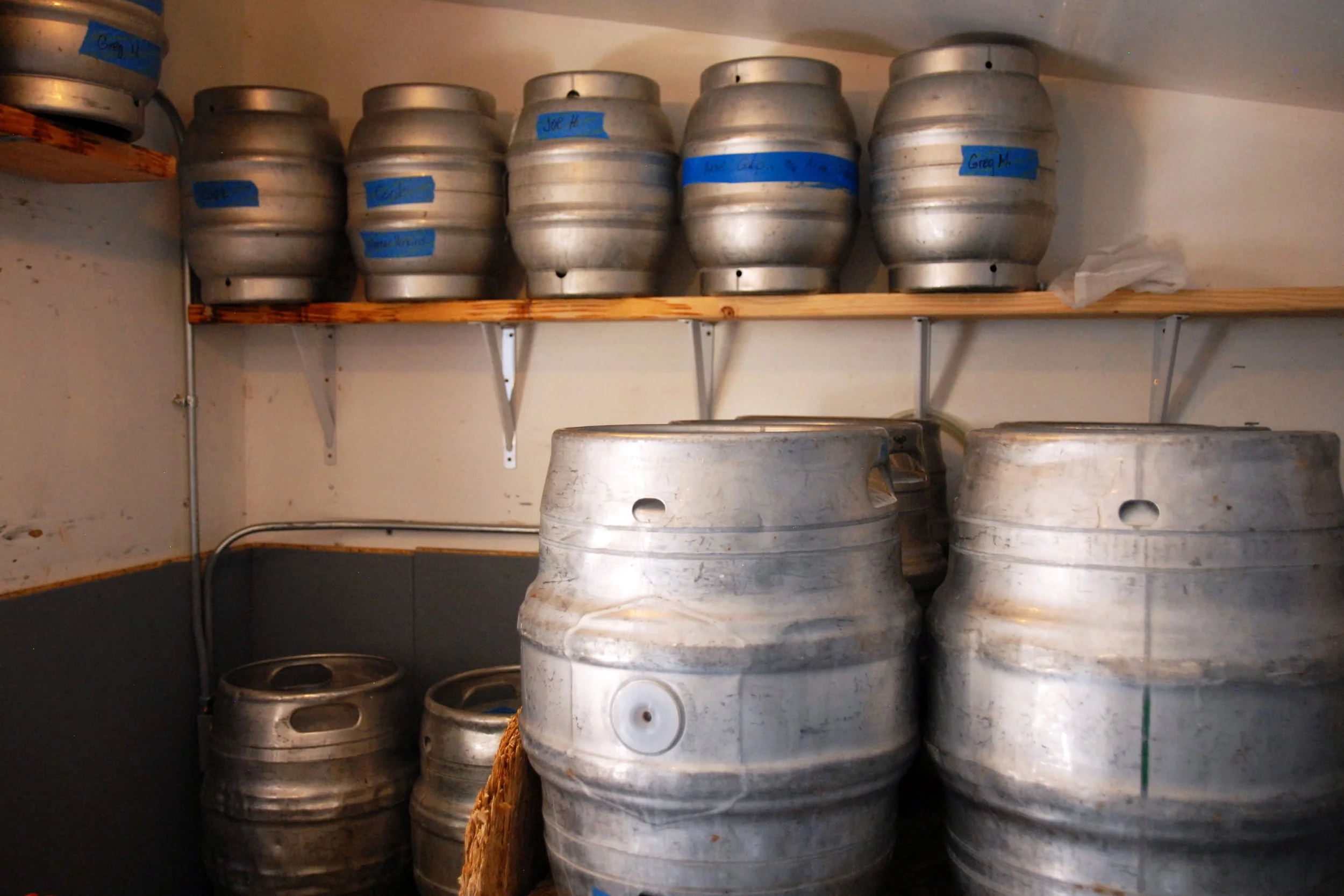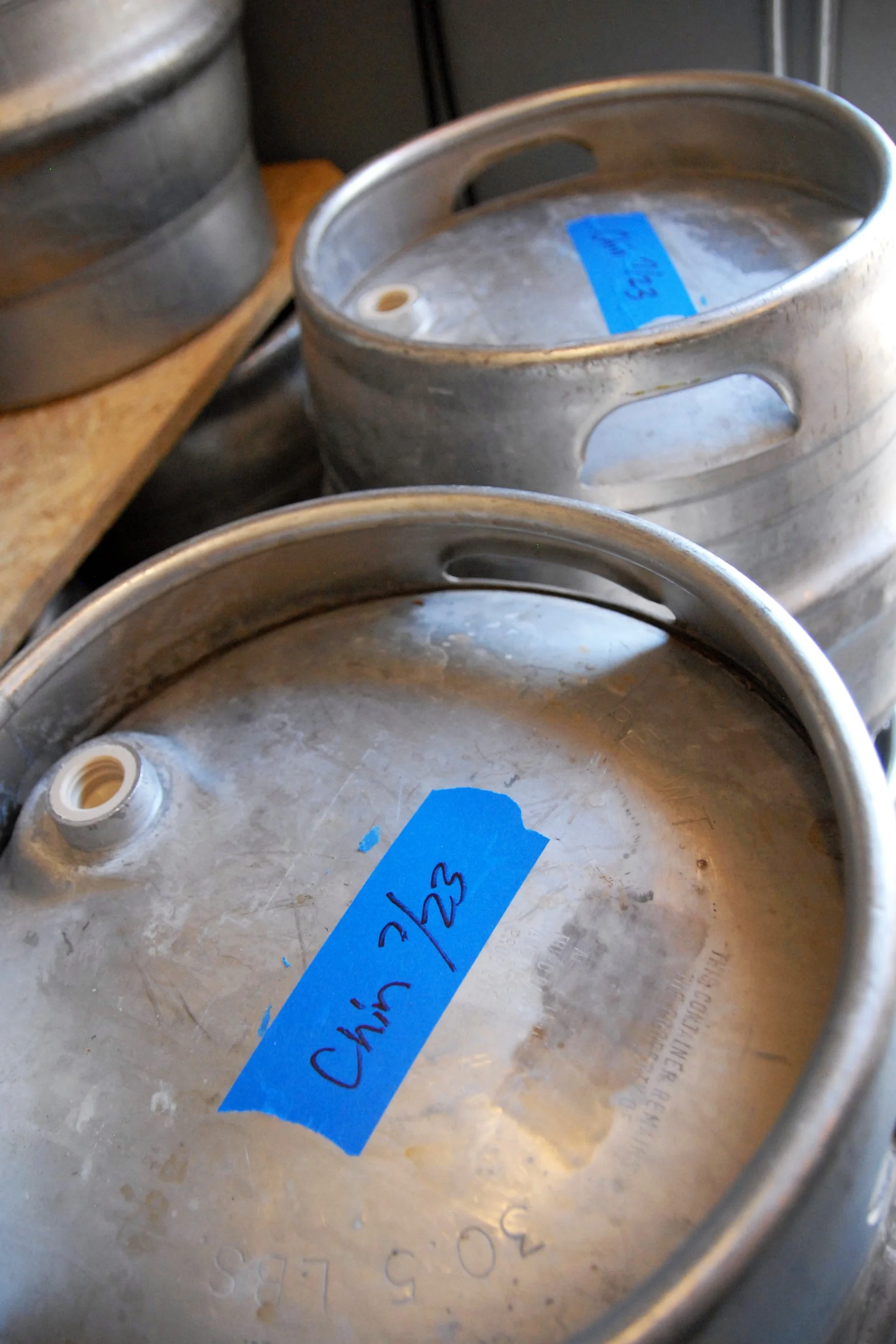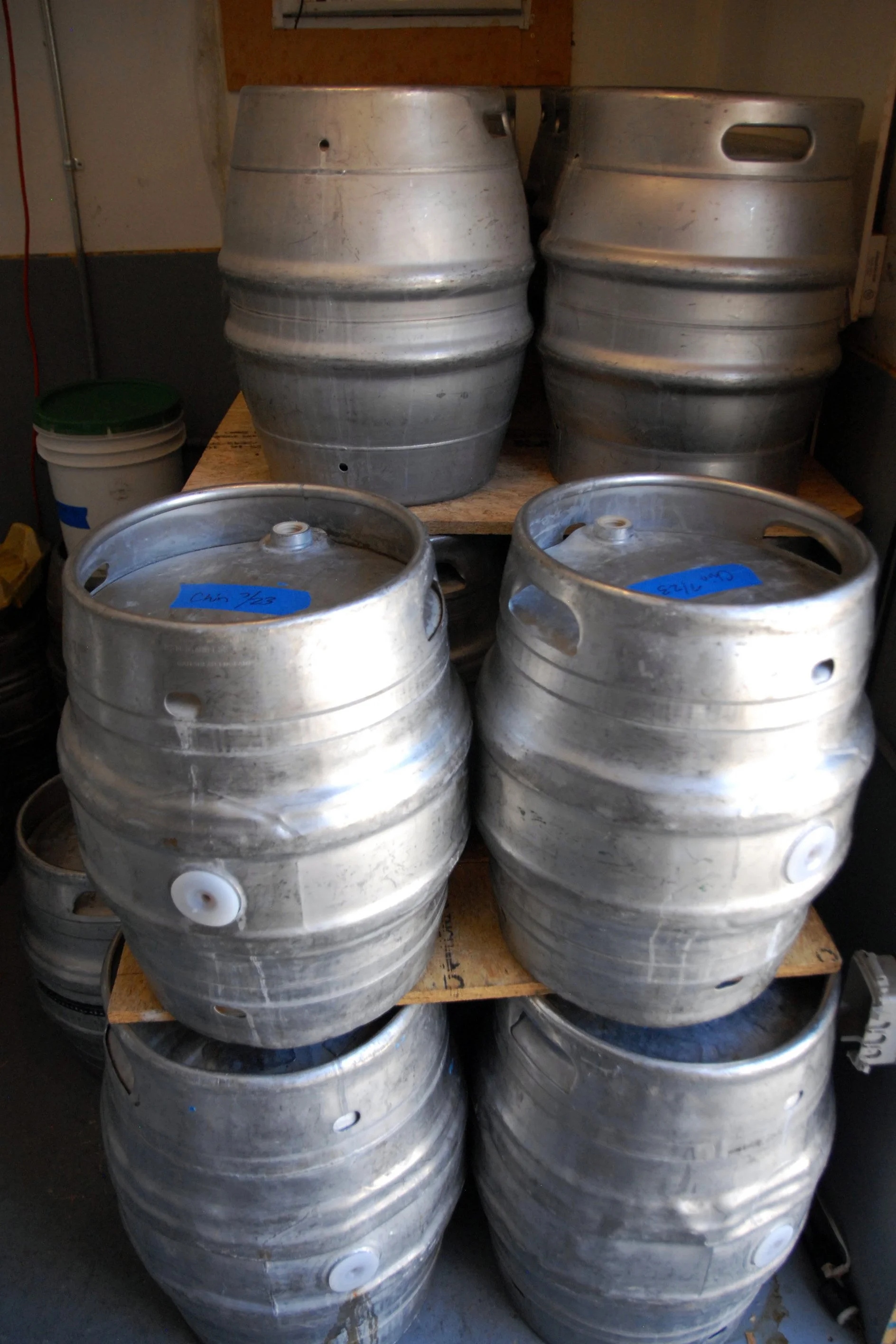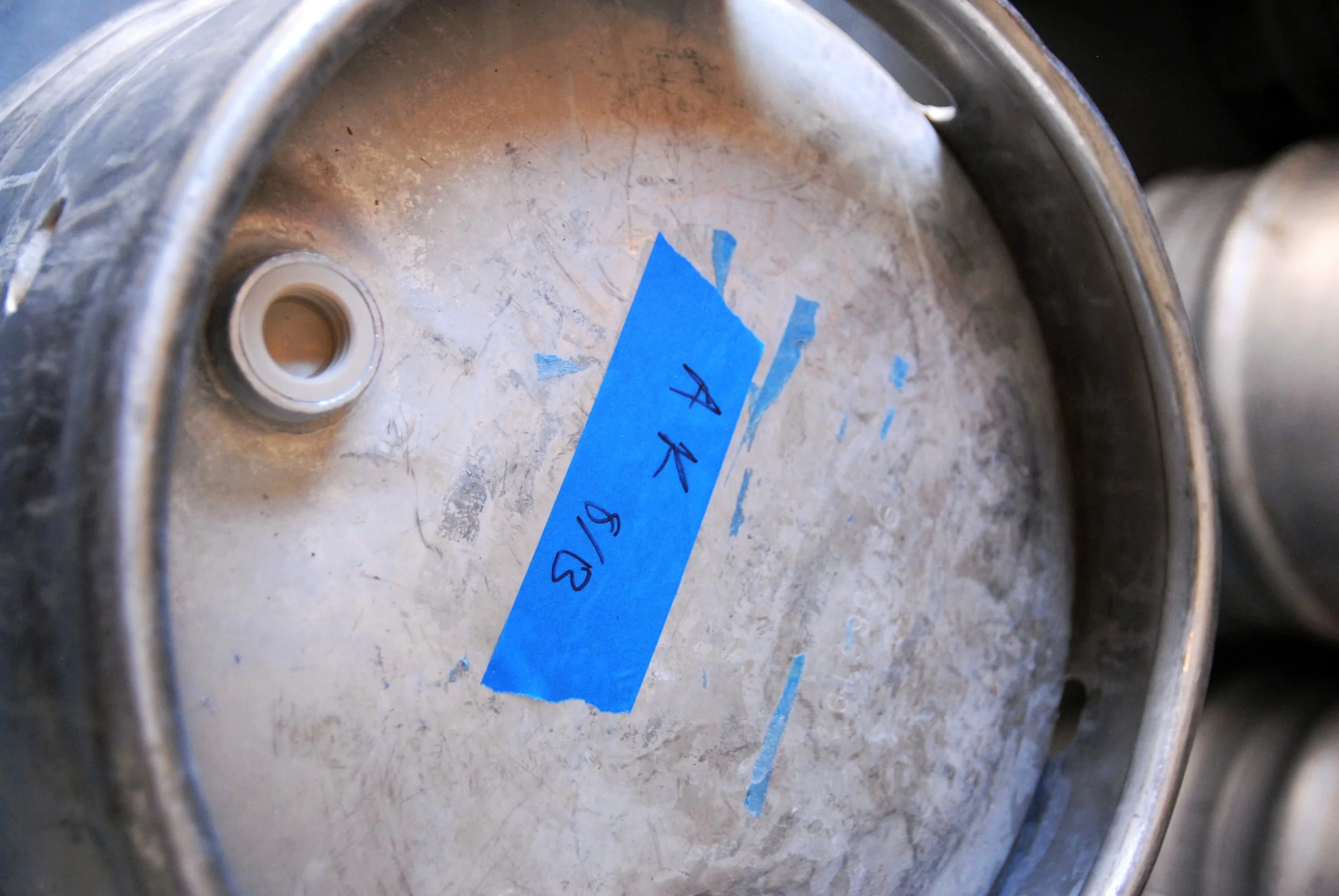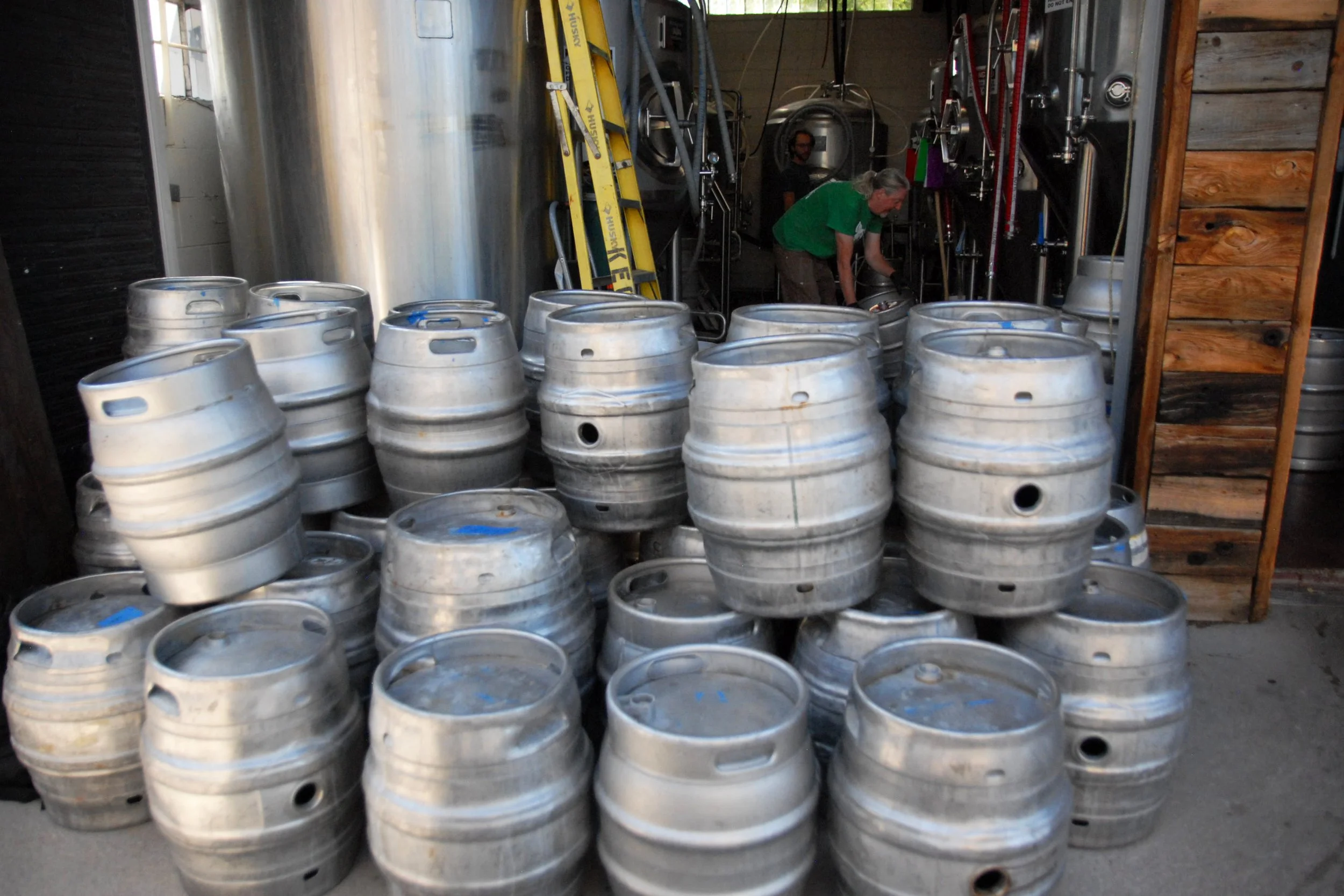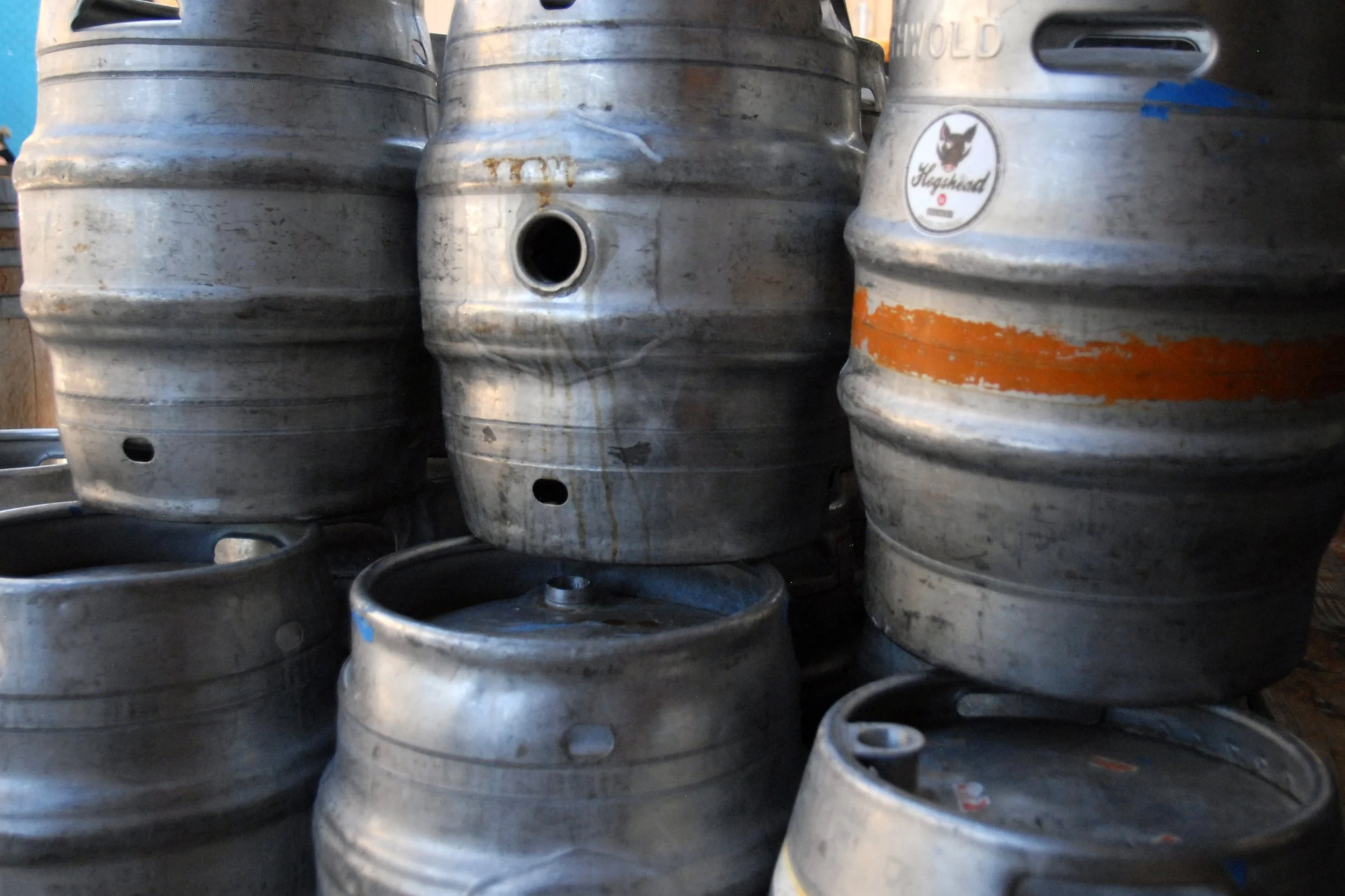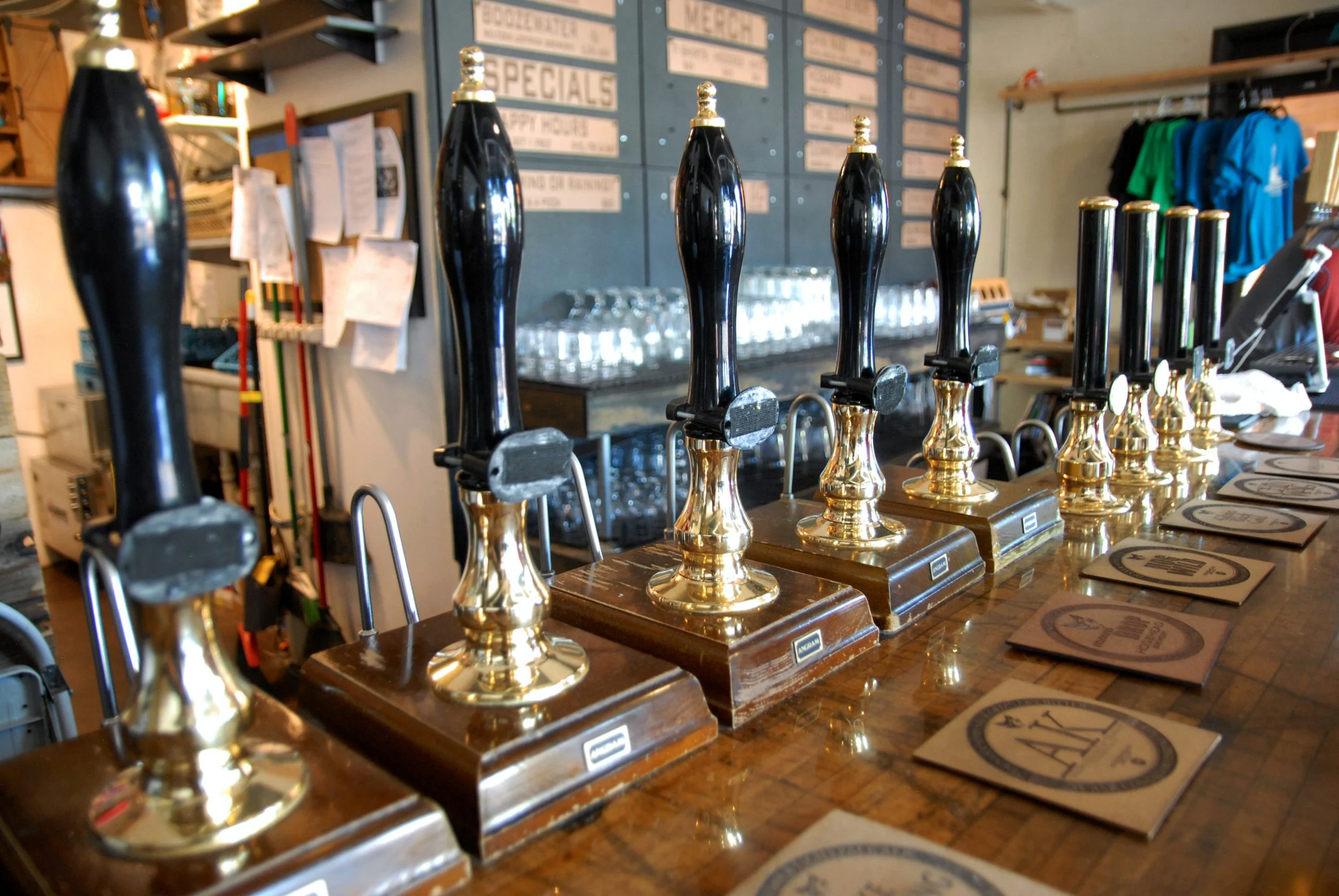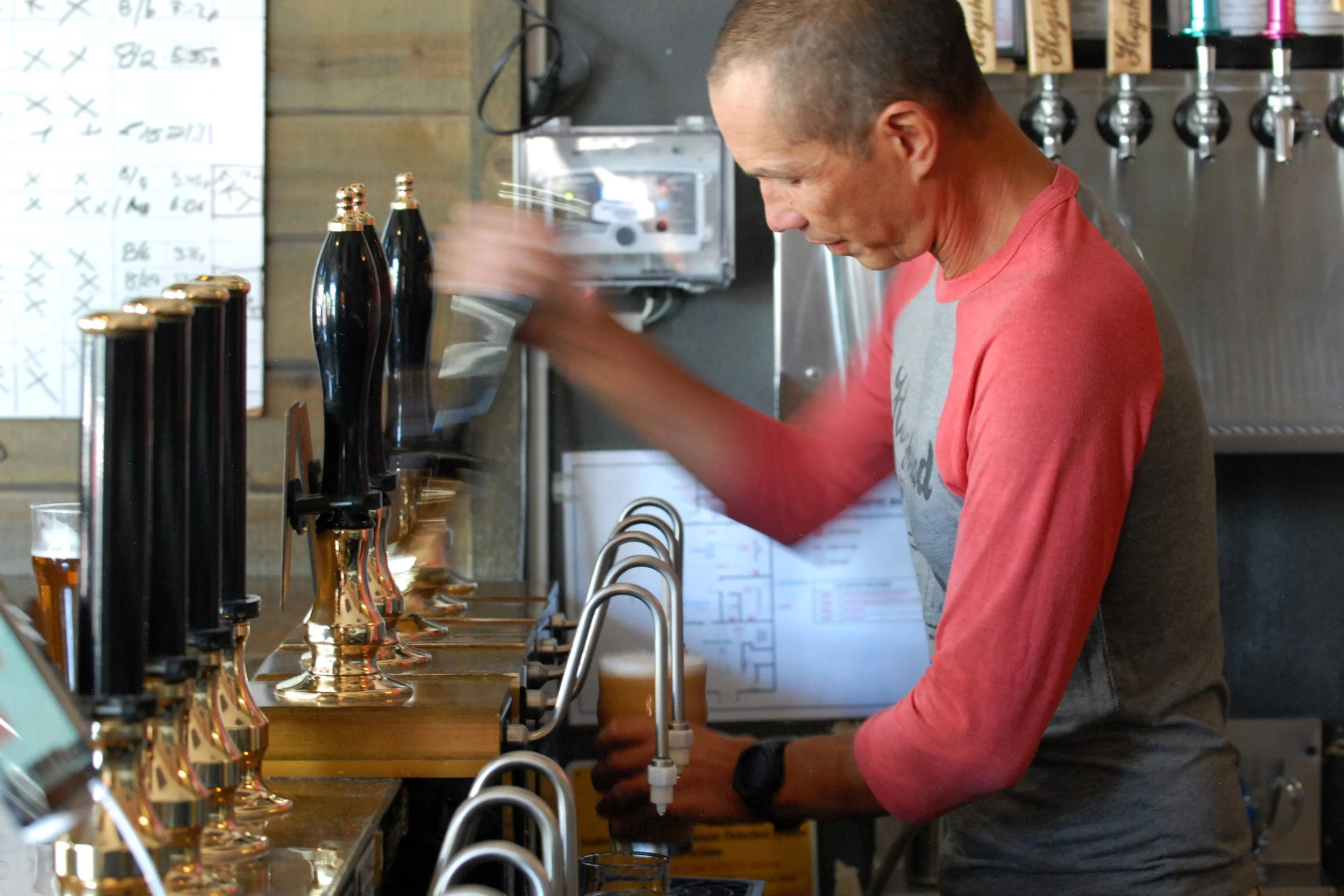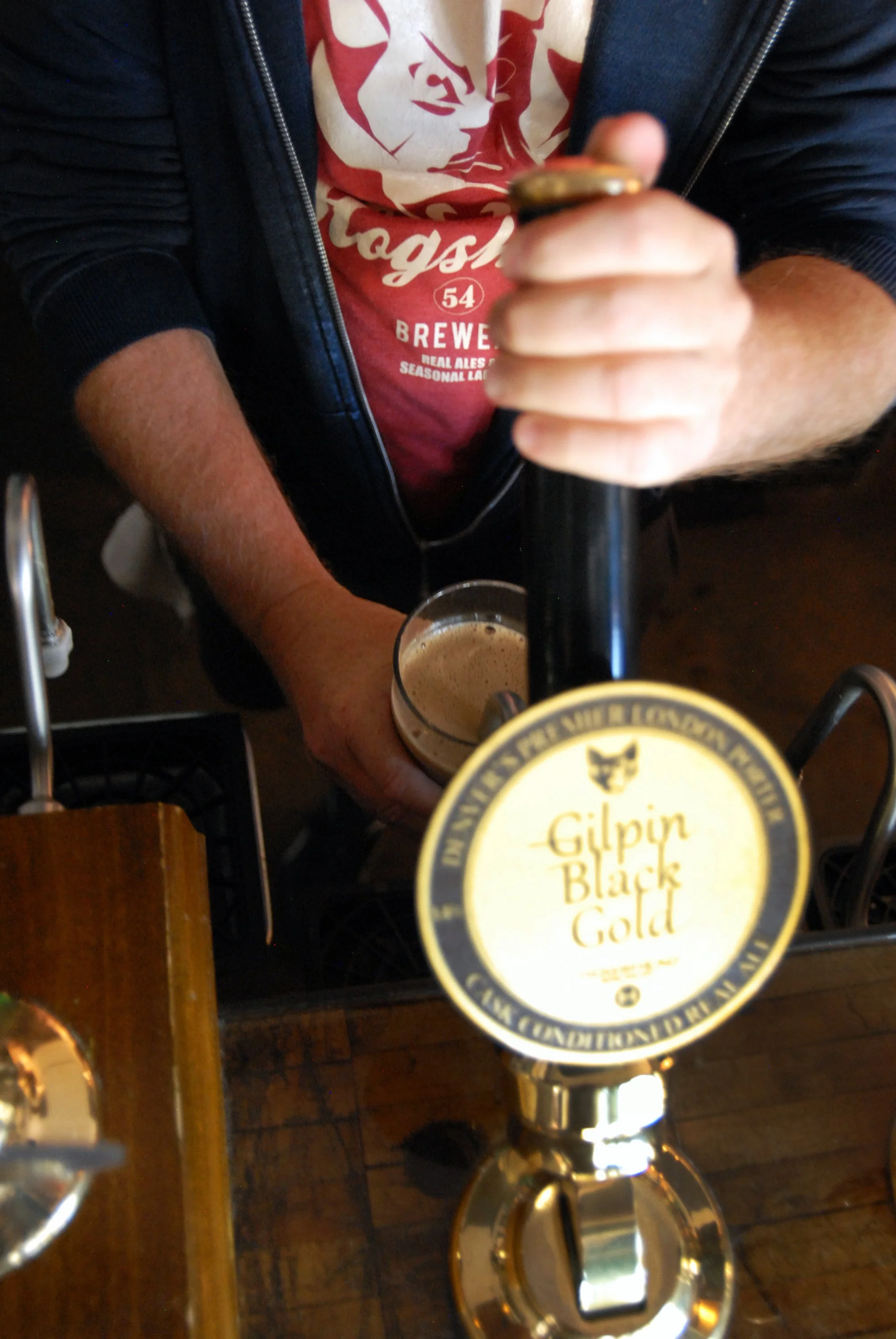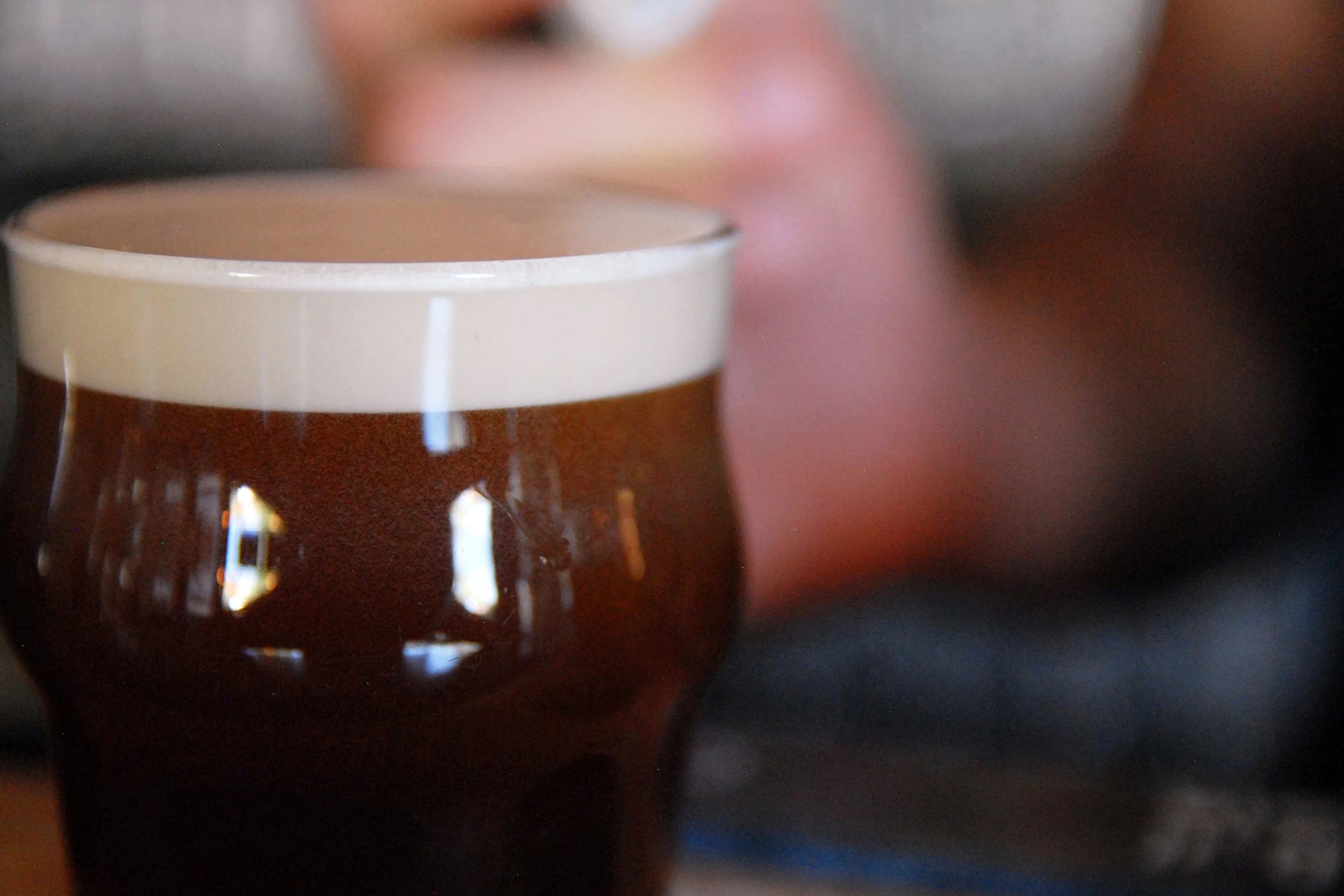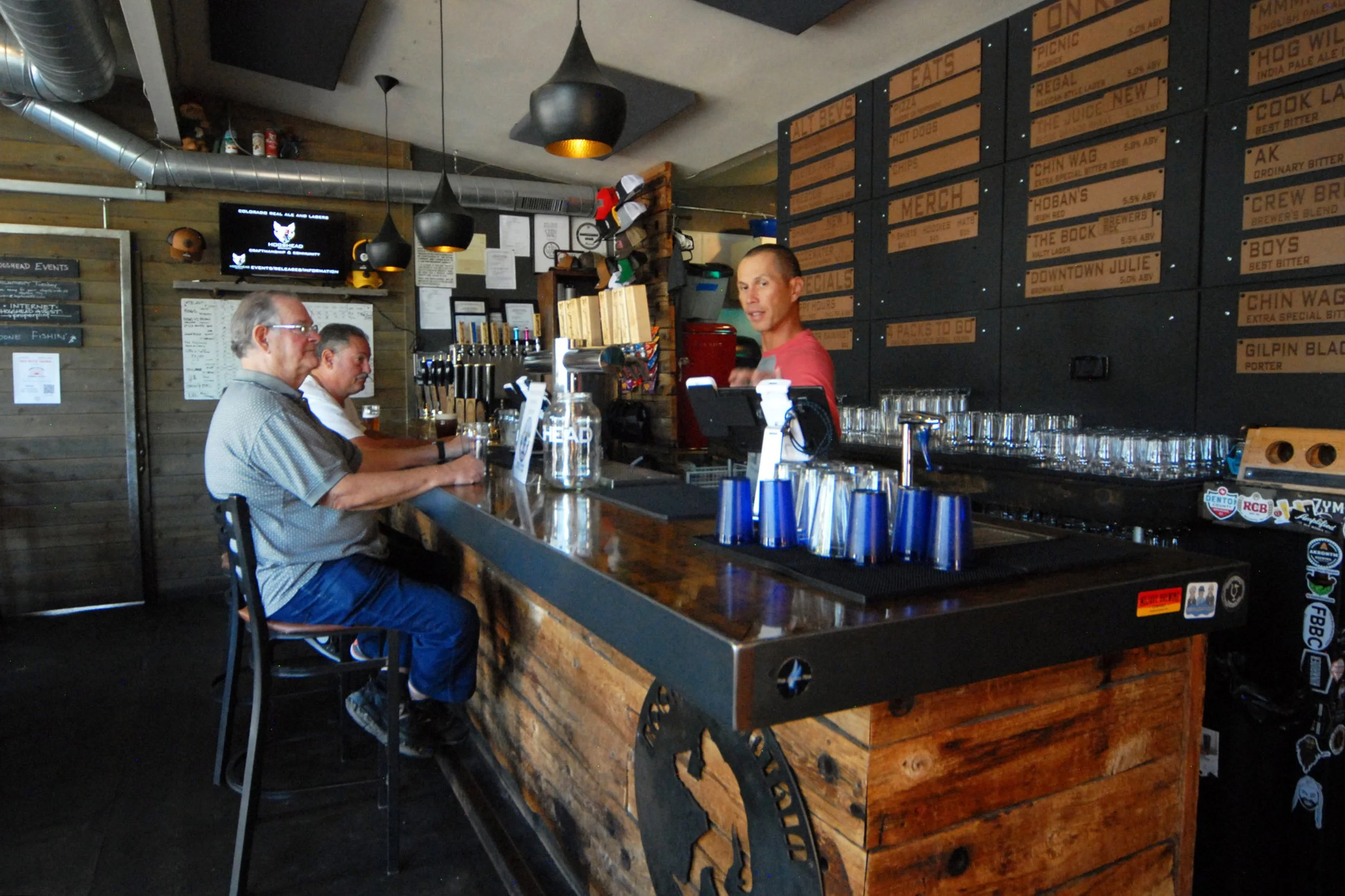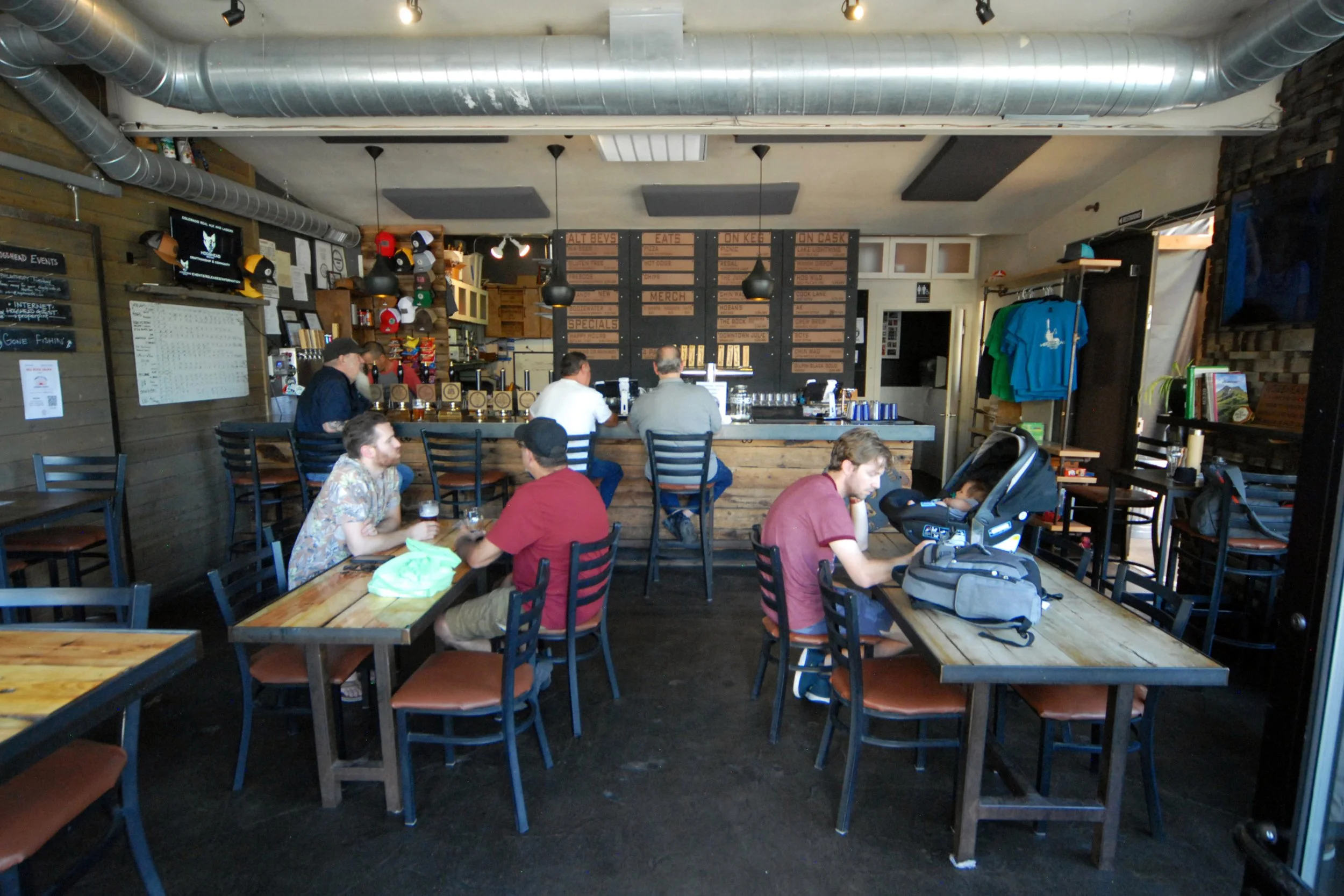And Cask For All — Hogshead Brewery in Denver, Colorado
Hogshead Brewery, in its heart of hearts, is a neighbourhood taphouse.
When you show up an hour before opening, the door is unlocked and employees are hanging out chatting with locals. By the time they’re officially pouring at noon on a late-August Friday, the room—a warm, wood-finished space of a few barstools, some tables, with a couple of leather armchairs in the corner—is already half-full. On any given day there might be a handful of 20-somethings eating chicken wings and sipping on pints, a dad with a baby in tow, someone playing a round of Go on the computer, or perhaps a few older gentlemen enjoying their midday rounds.
Countless places with a similarly intimate, friendly atmosphere populate the nearly 5,000-mile gulf between Denver and the United Kingdom—an atmosphere where Mike the bartender, or his numerous counterparts, know most of his customers' names, and they know his. Hogshead, however, is one of only a handful of such places in the United States, mostly located near the Atlantic seaboard, where those midday pints are being pulled from a beer engine. And even more rarified is the air where the milds, bitters, and English-style pale ales are being brewed on site.
“[Cask beer] is something that has always been important to me. As soon as I was educated on cask beer, it was something that I knew was special,” Robert Bell, co-owner and brewmaster at Hogshead tells me. “It’s something that’s not readily available, it’s something unique, that sets us apart from pretty much any brewery in Colorado, not to mention most breweries in the United States.”
Photography by Gabe Toth
Hogshead was founded in 2012, the concept of Stephen Kirby. “He was an English gentleman, and he had experience in British breweries and brought his knowledge to America when he moved here and wanted a beer he could drink,” Robert says. “He actually started a little drinking club first, and he made cask beer on pretty much a homebrew system.”
Eventually Kirby drummed up enough support, partnered with Michael Manczur and Stephen Kipp, and had the landlord convert the building from an old service station into a taproom, with the brewery located in an old service bay. Kirby pursued cask beer exclusively for the first six months or so, then expanded from four cask engines to add keg beer.
Hogshead’s core range now includes Gilpin Black Gold London porter, Chin Wag ESB, and Lake Lightning pale ale—all from the original lineup—plus AK Ordinary Bitter. These are not the bright, hoppy ales of most Denver breweries: crisp, cold, and bursting with carbonation. Soft and smooth off of the beer engine, the Chin Wag exemplifies the balancing act of their approach; creamy and malty, with just enough hop character to keep the beer from tipping too sweet, and far too easy to linger over for a second or third round.
***
By the time Robert left a job in outdoor equipment sales to become a brewer, with an internship at Hogshead in 2016, he was already a devoted Hogshead patron and a decade-long homebrewer. He’s lived there in the SloHi neighbourhood—a mostly residential area west of downtown between Sloan's Lake and the burgeoning Denver Highlands—for almost 20 years, and watched as the former gas station become a one-of-a-kind fixture in the Denver beer scene.
“When I went to school for brewing, it just made sense to me to come to Hogshead to learn the craft of brewing on a professional level,” says Robert. After his internship, he brewed at Denver's Diebolt Brewing and Los Dos Potrillos Restaurant and Cerveceria, south of the city, and learned to love brewing classic lager styles.
He continued to bartend at Hogshead on and off until being hired for the head brewer position in April 2021. When Kirby decided to sell the brewery in 2023, Robert was in a position to partner with the taproom manager, David Liechty, and their landlord, John Cianci, to buy out the business and continue carrying the banner for cask ale in the Rocky Mountains.
It’s a challenging role at times—both bartender and educator trying to get new consumers on board with a category that has sometimes been caricatured in the United States as “warm and flat.”
“Every experience that we have with a new beer drinker at Hogshead is typically an educational one,” Robert says. ”It’s definitely a lot of work, but I certainly think it’s one of the things that will make us important all the time.”
“Like anything, it’s pretty much hit and miss,” he adds. “Most of the time, it seems like you’re going into the experience feeling like you’re losing, and it’s surprising how often people come away feeling like, ‘I get it!’”
““Cask beer is something that has always been important to me.””
He tells me how he’s seen the age of their regulars change over the years. They have repeat customers in their 20s all the way up to the elderly gentlemen with nothing better to do at noon on a Friday. There’s a small number of British immigrants, as well as customers who studied abroad and became familiar with cask beer. Then there are the customers who are on the backswing of the hoppy/high-ABV pendulum and are looking for a different experience.
“I think you’re seeing more people who are moving away from wanting a lot of hoppy beers on and wanting to see more, for lack of a better word, balanced or malty beers. That just leans right into what we’re doing,” Robert says.
“The other thing that I think really helps is all of our beers are sub-six percent. I’m seeing a move towards [people] wanting lower-ABV beers.”
When other brewers come to Denver for the Great American Beer Fest, World Beer Cup, or other events, Robert often sees them coming to Hogshead. “They know about us, they know what we’re doing, and they seek us out. That alone tells me that we’re probably doing it right, 'cause we’re able to maintain a level of authenticity.”
At festivals—which they don’t often do, both because of the logistics of transporting cask-conditioned ales as well as a mindset of bringing customers in rather than going out offsite—he said the interactions generally start with a sideways look: “Like, what the heck is that?” he says. Then it moves on to, “I’ll give that a try.” And a couple of hours later they come back and tell him, “That was awesome.” And even later, they come back and say, “This is the best beer here.”
“It happens every single time I go to a festival,” Robert says. “It happens enough that I know it’s making sense to people. They’re getting it.”
He even works with some of the local colleges that have beer programs, and cask beer being as unique as it is in the US, he usually teaches two or three classes each quarter on the subject.
“We’re trying to educate younger people who are coming up, as well,” Robert adds. “A lot of the folks who are new to the industry probably don’t know a whole lot about cask beer, it’s just not readily available.”
Steve Kurowski was the marketing director of the Colorado Brewers Guild from 2010 to 2019 and is now the executive director of the Craft Maltsters guild. He tells me how the appeal of Hogshead was immediate for him, and he could see it resonate with the brewers around the city.
“Back then, craft beer lovers responded very well to most new neighbourhood breweries," he says. "But the difference with Hogshead, it was one of those small handful of breweries where professional brewers would hang out, drink beer and talk shop. A real sign of when a brewery is doing something right.”
“Cask beer, at least in America, has that reputation of being an older person’s beer, like your grandfather’s beer, versus the hip young thing, seltzer or whatever. Beer in general is suffering a little bit of that—I feel like younger people in general are turning more toward other beverages and losing interest in craft beer.”
The unique proposition that they’re offering with cask beer continues to work well for Hogshead, though. Robert tells me it’s the reason that people will come to see them over going to another brewery that has the same menu as everyone else in town.
““I feel like younger people in general are turning more toward other beverages and losing interest in craft beer.””
“From my own personal standpoint, I love the presentation,” he says. “From a business standpoint, It’s something that we have created a very devoted following [for] that helps us sustain all the time.”
And when it comes to “warm and flat,” Robert said he feels that the approach ultimately offers a superior flavour experience.
“I love beer. I love the way beer tastes, and I want my beer to taste a lot more like beer. Whenever I get a beer that is ice cold and carbed to the heavens, I feel like they’re trying to mask something. It’s like, ‘How do I taste this beer?’” he says. “The cask beer experience, with the temperature being slightly warmer, the carbonation level being slightly lower, the conditioning time in the cask that allows the yeast to mature the beers differently, all sort of built to a higher beer intensity flavour.”
Robert eschews the phrase ‘session beer’ as part of a consumer trend that has ebbed and flowed over the years, but the idea of flavorful beers served at a manageable ABV has never gone out of vogue among beer lovers such as Steve Kurowski.
"Personally, I've always gravitated toward low-ABV beers, so I was pretty excited to have a place close by that leans into the idea of sessionable, full-flavoured styles,” Steve tells me. “Beers that let the malt do the talking instead of hiding flaws by packing in a bunch of hops.”
***
Over the years Hogshead has slowly expanded its draught offerings, reaching a current balance of eight keg and nine cask lines, along with keeping a number of non-alcoholic options available, as well. Robert has seen that it was essential to diversify, and has continued to expand their offerings.
“I’d love to be able to lean 100% into cask beer, [but] it’s just not very viable for us,” he said. “I don’t think we could sustain with that, not in the environment we’re in. Not in the economic environment we’re in or the drinking environment we’re in. That’s not to diminish what we do on our cask side. It keeps the bills paid so we can keep doing what we love doing.”
Even the keg beers that he brews and serves, though, fit into the broader context of a cask ale mindset: “I try to make everything sort of fall in line ideologically with what we’re doing on the cask beer,” Robert tells me.
He brought his love of lagers with him to Hogshead and will often brew German-style lagers along with Czech-style pilsners. He offers an IPA for hoppy beer drinkers, but it’s relatively low in bitterness.
"It’s about balance, it’s not about heavy, lopsided things. That’s just something that we consider to be important internally,” Robert says. “Every brewer that’s ever been here has been pretty rooted in more traditional beer styles, not super anxious to follow a lot of trends.”
At a time when drinkers are continually searching for the hot new thing and brewers fight to keep up with those fads, it may seem contrarian of Hogshead to stay the course, their eyes fixed on traditions rather than trends—flavour rather than flash.
Robert and others might argue that such things never really go out of style—a warm blanket on a cold night, or a creamy pint of hand-pulled porter—while Steve, who still resides in Denver, views the ability of Hogshead to prosper as an indicator of the true worldliness of the city's beer culture.
“The fact they are staying true to lower-ABV, English-style ales in a time when breweries are doing everything they can to get more beer lovers to walk through their doors, it would be so easy to brew what people are drinking these days,” he tells me. “Denver is now a sophisticated enough beer town that Hogshead can exist and thrive.”


